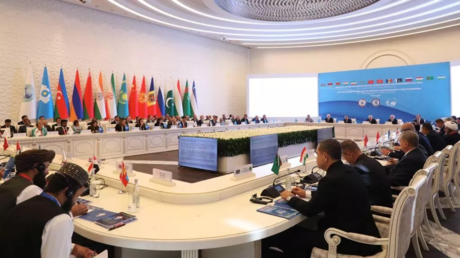
The SCO and CIS are seeking to maximize cooperation to counter “growing radicalization,” according to a press release
A joint conference of the Commonwealth of Independent States (CIS) and the Shanghai Cooperation Organization (SCO) on combating terrorism and extremism kicked off on Wednesday in Tashkent, Uzbekistan.
The event was organized jointly by the State Security Service of Uzbekistan, the CIS Anti-Terrorism Center and the SCO Regional Anti-Terrorism Structure, according to a press-release.
Authorities representing 20 CIS and SCO member-states, including Azerbaijan, Armenia, Belarus, India, Iran, Kazakhstan, China, Kyrgyzstan, Pakistan, Russia, Tajikistan, Turkmenistan, and Uzbekistan are participating in the two-day event. SCO observer states Afghanistan and Mongolia, plus SCO dialogue partners Egypt, Qatar, United Arab Emirates, Saudi Arabia, and Türkiye are also taking part.
On the first day of the conference, the participants exchanged views on major threats to collective and national security and discussed ways of countering terrorism and extremism. They noted a steady trend of “increasing radicalization,” especially among young people. This is a result of the “continuing activity of terrorist ideologists” in the information space and the use of modern information and telecommunications technologies by international terrorist organizations, they said.
According to the press release, growing geopolitical tensions have presented unique challenges to efforts at countering radicalism worldwide.
“Terrorism remains one of the most dangerous problems of our society, requiring a strong stand and coordinated efforts of the entire international community,” the conference concluded.
The participants further outlined the need for additional development of common measures aimed at countering international terrorism.
On Thursday, the attendees will discuss cooperation in countering terrorist financing, including joint projects aimed at increasing the efficiency of monitoring financial flows and identifying suspicious transactions.
Read more at RT